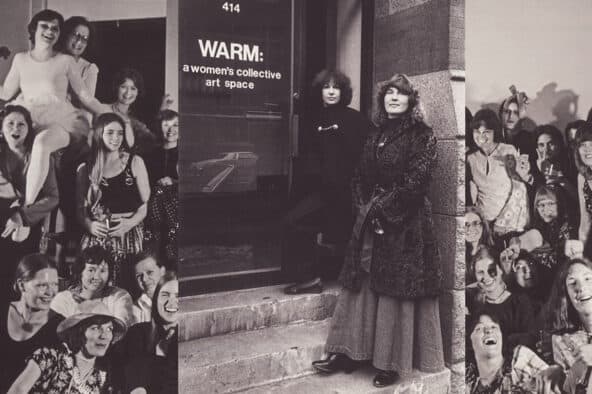Art on Hennepin
September 8 - January 7, 2024
Jack Link’s Legend Lounge

The arts culture of Minneapolis has a profound and vital history on Hennepin Avenue and in the Hennepin Theatre District. Since before the time of white settlement, along the trail that would become Hennepin Avenue, the local tribes expressed themselves with storytelling, dance, painting and every form of artistic “making.” Since the mid-nineteenth century origin of Minneapolis, Hennepin Avenue has always been home to art studios, galleries, performance spaces and artist communities that hold direct ties to today’s artistic institutions. The Minneapolis Institute of Art (MIA), the Minneapolis College of Art and Design (MCAD) and the Walker Arts Center each have their roots on Hennepin Avenue.
Hennepin Avenue has been home to a number of influential figures of art history. In 1882, Oscar Wilde famously came to Minneapolis and gave a lecture on aesthetics at the Academy of Music at Hennepin and Washington avenues. At the turn of the twentieth century, a community of artists between 6th and 7th streets called The Old Band Box included international arts celebrities and founding members of the Minneapolis Institute of Art. One artist in particular, Robert Koehler, painted the scene “Rainy Evening on Hennepin Avenue” that is now part of MIA’s permanent collection. The German artist later served as the director of the Minneapolis School of Fine Arts; now MCAD.
T.B. Walker began what is now the Walker Art Center from his mansion at 8th and Hennepin, located where the State Theatre and LaSalle Plaza now stand. By 1920, Walker would move and build a new museum at the current site of the Walker Art Center at Vineland and Hennepin Avenue. The Walker Arts Center has gone through several iterations since that time and is now internationally renowned for its impressive collection of Contemporary art.
The mid-twentieth century witnessed Hennepin Avenue change through urban renewal initiatives, the post war flight and a massive reinvention of the downtown. In the mid-1960s, The Bottega Gallery between 8th and 9th streets miraculously rose to become a critically acclaimed experimental artist space and gallery. The 1970s and 1980s saw an entire arts scene manifested in a single building. Artists occupied over thirty studio spaces in the Wyman Building including The Women’s Art Registry Minnesota collective, one of the first all-women arts organizations. In the early 1980s, Rifle Sport Gallery in the Old Block E became a groundbreaking alternative art gallery and performance space. Patrick Scully opened a seminal dance arts studio on the entire third floor above Shinders in Block E, producing remarkable film work from this location.
On today’s Hennepin Avenue, Hennepin Theatre Trust carries the legacy of these artistic greats. Since 2013, the Trust has been a leader in public art initiatives along Hennepin Avenue and the greater Theatre District, supporting emerging and established artists alike. The Native American arts community continues through We Are Still Here, a multiyear collaborative partnership between the Native American Community Development Institute (NACDI) and the Trust to bring large-scale, high-profile public artworks to the Hennepin Theatre District and the American Indian Culture Corridor. We Are Still Here, It’s the People, 5 to 10 on Hennepin, largescale outdoor murals and rotating exhibitions in the Best Buy Gallery and Jack Links Legend Lounge continue to be artistic mainstays that further the long, rich tradition of art on Hennepin.
Partners
